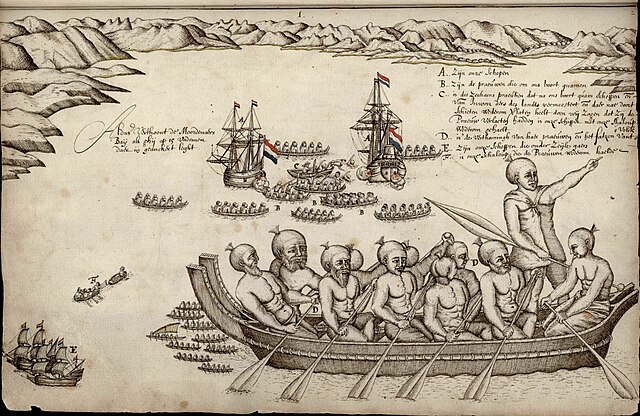The Whanganui campaign was a brief round of hostilities in the North Island of New Zealand as indigenous Māori fought British settlers and military forces in 1847. The campaign, which included a siege of the fledgling Whanganui settlement, was among the earliest of the 19th century New Zealand Wars that were fought over issues of land and sovereignty.
View of Wanganui, 1847 Artist: John Alexander Gilfillan
Ngati Haua-te-Rangi chief Te Mamaku
Māori are the indigenous Polynesian people of mainland New Zealand. Māori originated with settlers from East Polynesia, who arrived in New Zealand in several waves of canoe voyages between roughly 1320 and 1350. Over several centuries in isolation, these settlers developed their own distinctive culture, whose language, mythology, crafts, and performing arts evolved independently from those of other eastern Polynesian cultures. Some early Māori moved to the Chatham Islands, where their descendants became New Zealand's other indigenous Polynesian ethnic group, the Moriori.
Māori performing a haka (2012)
Early Archaic period objects from the Wairau Bar archaeological site, on display at the Canterbury Museum in Christchurch
Model of a pā (hillfort) built on a headland. Pā proliferated as competition and warfare increased among a growing population.
The first European impression of Māori, at Murderers' Bay in Abel Tasman's travel journal (1642)






